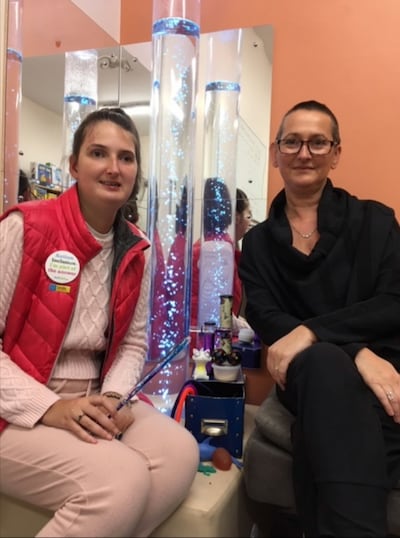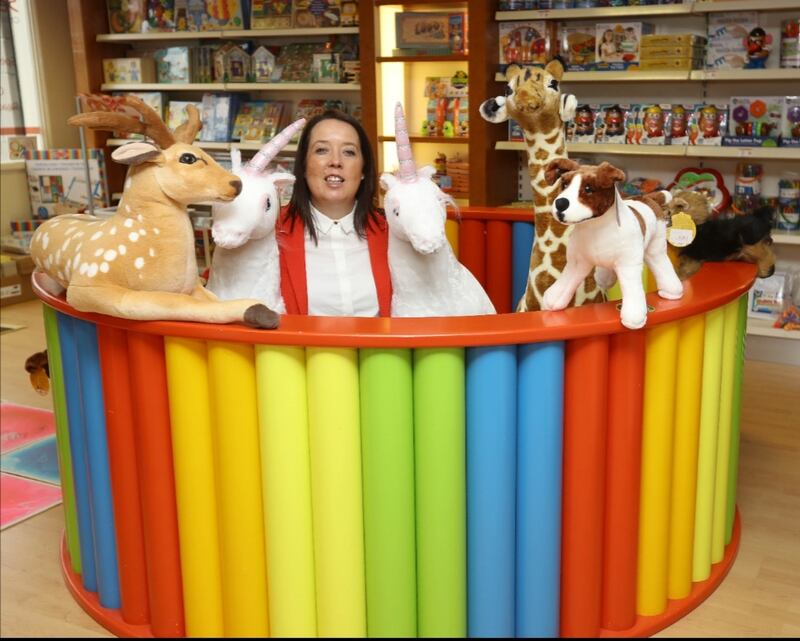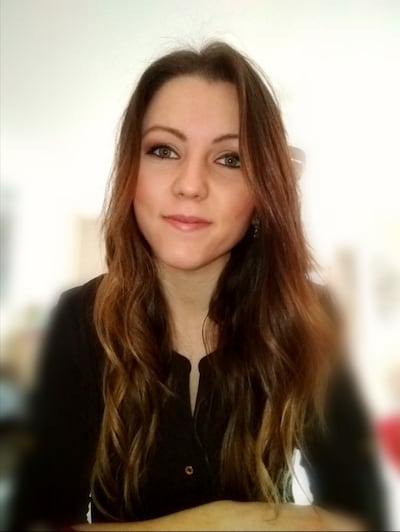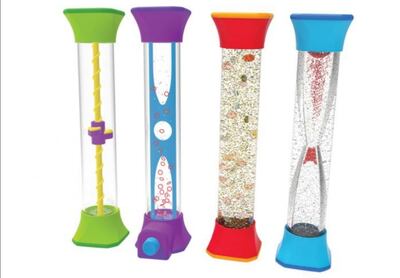The "frustration and difficulties" Áine Conacur and her husband Michael endured while trying to source suitable products that would assist with their eldest child Ailis's development was a catalyst in encouraging the couple to set up their family business, Thinking Toys, which sells toys and equipment for children and adults with additional needs.
Ailis, who is now 24, has Sturge Weber Syndrome and had major brain surgery when she was just two years old. “Her main additional needs are as a result of her autism, epilepsy and her visual impairment,” Áine says. “Our focus is on toys and small-scale specialist equipment and where possible, we cater for individuals with all additional needs, be they physical or intellectual.

“For a child or adult with additional needs it is very important to get the level of challenge just right,” Áine explains. “This is where we differ from many mainstream shops. In our range of products, we have toys and activities that may seem similar but in reality are different because they are all operating at a different level of challenge.
“If we over-challenge the child then we will reduce the opportunity for learning. Instead of a fun successful activity, where our child is enjoying learning and growing in confidence in their abilities, we are more likely to create stress and disappointment for the child.
“Children with additional needs can also be tougher on toys both from a physical perspective and also excessive use. It is fairly normal for a child to extensively focus on using one product over all others. In many cases this is to be promoted rather that discouraged, say for example in the case of a chew toy. In that context, it is important that the toy or activity is well-made and can withstand a bit of rough handling and excessive use.”
To explain how various toys can support different needs, Áine has created a library of short videos on her Instagram profile. "Last week for example, we were dealing with visual perception. We ran an "Áine's Advice" post explaining what visual perception was and the subskills involved. We also ran product videos explaining how to use the products to build these skills," she explains.
And it’s not just children with additional needs that Áine’s shop caters for. “A child with additional needs grows up to be an adult with additional needs. Personally, we have experienced this as Ailis went through her teenage years and into adulthood. Our experience has shown that social and sensory issues don’t go away, in fact, that can return with heightened emphasis.”
Ailis herself loves that her parents own a toyshop. “I get to try out all the new stuff,” she says. “I have lots of favourites and I like different things at different times depending on my mood or my stress levels. For example, my favourites when I am at home and stressed are my Bubble Tube, Squeezy Sensory Products and Kaleidoscopes. When I am recovering from a seizure my favourites are my dog, Pearl, and my Weighted Blanket.”
Karen Leigh set up social enterprise, Sensational Kids, 10 years ago when she struggled to get support for her own son. "As a parent of a child with additional needs myself, I used to spend hours online searching for suitable toys that would both interest my children and also help them with their development at the same time. My children weren't interested in the toys available through the large big brand toy stores but they loved what I call "back to basics" old fashioned toys. For children with additional needs it's really all about providing toys where the child has to do the playing and not toys where the toys do all the playing! Play is about helping children to learn.

“I used my own experience as a parent to lead and guide me towards the product range we offer from our online child development and learning store. Nowadays we employ our own multidisciplinary therapy team of child development specialists at Sensational Kids including occupational therapists and speech and language therapists, who have a big influence on our product selection and product knowledge too. Our products are specially chosen by our team for their value to support children of all abilities to play and learn.”
Karen says their product range is suitable for all children. “Toys for children with additional needs aren’t really any different to good educational toys. You just need to avoid toys that do all the playing for them and look for back-to-basics educational toys that offer learning opportunities, such as jigsaws, shape sorters, puppets, and toys like slime, and water beads that offer sensory play experiences.
“Children with additional needs also often enjoy toys and gifts that offer sensory input such as toys that stretch like a springy slinky, toys that have a visual element such as spinning tin tops, infinity mirrors, lava type lamps or toys that offer tactile input such as stretchy hand fidget toys that they can squeeze and pull”, Karen explains. “Cause-and-effect toys are also really good choices. Cause and effect toys teach children that their actions can cause something to happen. A rattle makes a sound when they shake it, or a ball that falls through a hole after they push it down teaches a child they can change something in their environment.”
One particular toy that Karen finds beneficial for children with sensory challenges is the hanging nest. It’s “mainly used for self-regulation and calming in children with sensory integration difficulties. The hanging nest can provide the child with slow rhythmic movement which can be very calming, and can provide a child with more intense vestibular input if spun in circles. It also provides a safe space to go if a child is feeling overwhelmed with too much sensory input, which can often be a difficulty around Christmas time.”

Mireia Lopez set up Discovery Playtime after becoming involved in running messy and sensory play sessions for children with autism. The shop began by selling toys used in the sessions "so parents could extend those activities at home".
“Messy Play allows children to freely explore textures, colours, combinations and sensations through play in a prepared environment where everything is safe and attractive to them which generates curiosity,” Mireia explains. “Children use their senses to interact with the material provided so they are not just exploring what’s out there, but also getting to know their own body and self - what they like, what they don’t like, how hard they can squeeze something, how far they can spread the paint. With these sessions I learned that children are naturally curious and they all need their time and space to feel safe and start interacting with the activity.
“Most sensory toys specific for children with additional needs can be very expensive, so I try to supply affordable and great quality products that I know will help them with their development without parents having to spend a fortune, as well as ideas on how to make your own sensory bottles, playdough, edible sand, etc, all for free through social media and on the website.”

One of Mireia’s favourite toys are the sensory fidget tubes. It’s a set of four tubes with liquid inside and different items in each.
“Watching each one of them is like doing a little meditation for a child. It brings their attention to the sparkles and it regulates their emotions, breathing and focus. You can ask a child to observe a specific colour inside, ask them if the glitter goes up (point with the finger) or down, so you are helping him to bring his attention to something specific. You can also roll the tubes over the child’s legs, arms or back as the pressure can be very calming too.”
Equipment and toys to support children with hearing loss are available at Chime's website. "Over 90 per cent of children with hearing loss are born into hearing families" Brendan Lennon, Head of Advocacy at Chime, explains.
“Deafness and hearing loss often mean people feel ‘left out’ and socially isolated. We want to change that to a more inclusive and supportive society for all.
“Access to books and other learning resources that promote communication and language is absolutely critical for children with hearing loss. The primary challenge for those involved with the child is ensuring that he/she develops language, on a par with their peers if possible, whether the child uses spoken or signed language.
“This is the key to the child reaching their potential socially, educationally and vocationally. Sharing a book with a deaf child is one of the most positive things a parent can do to help develop the child’s language and reading ability.”










